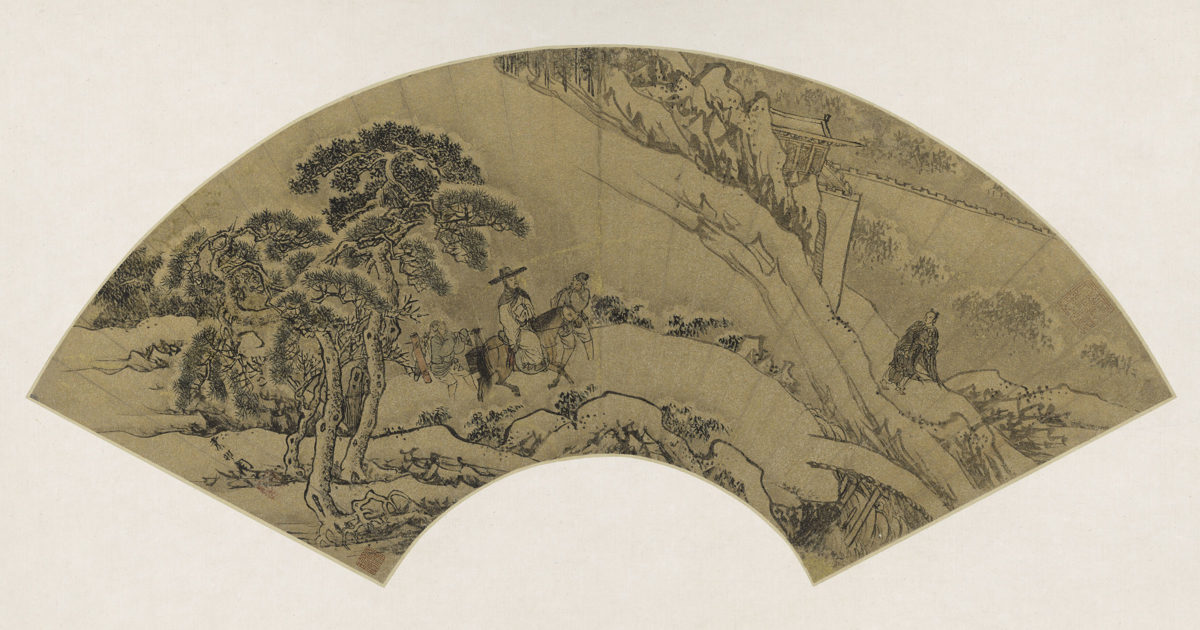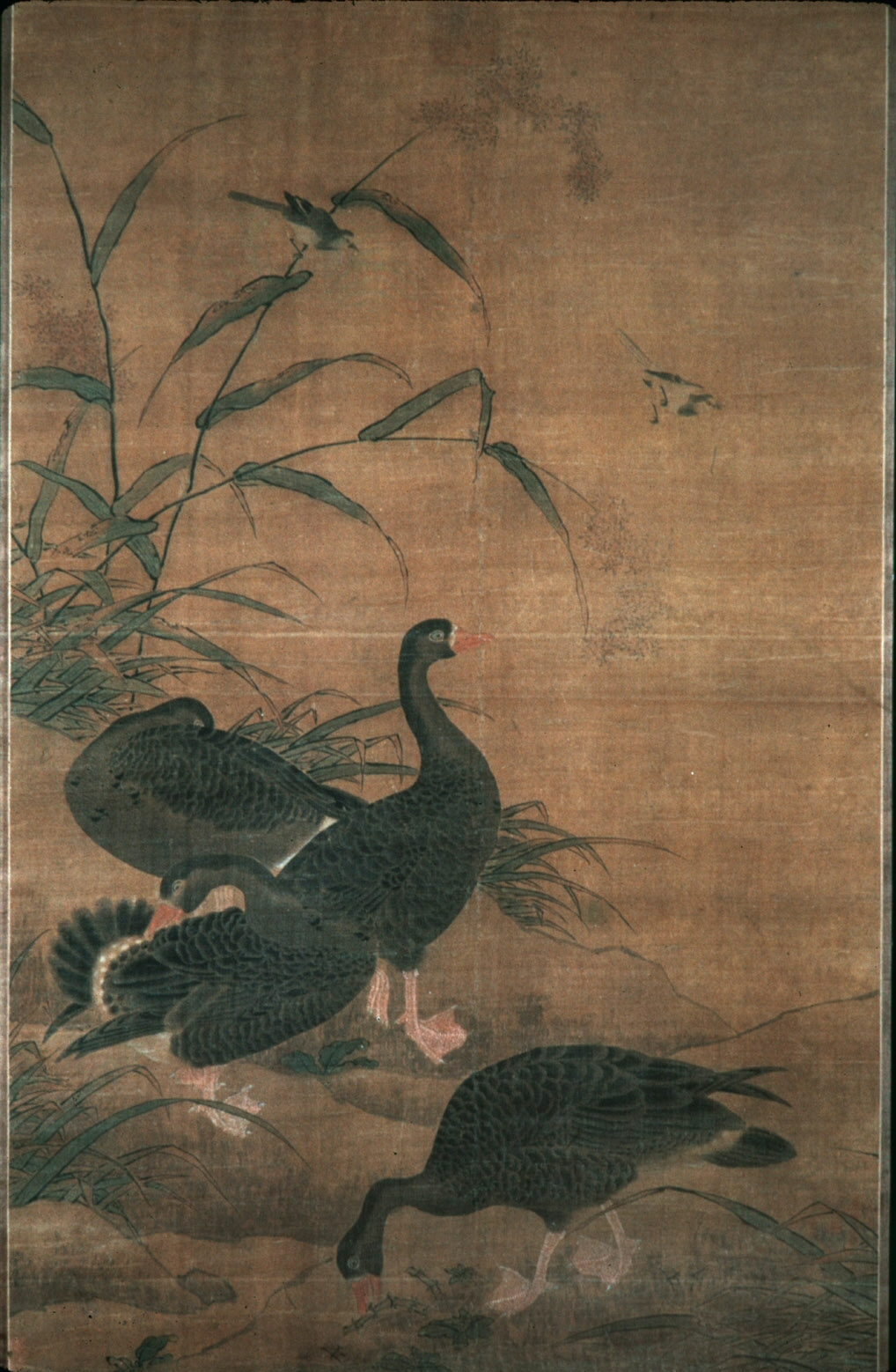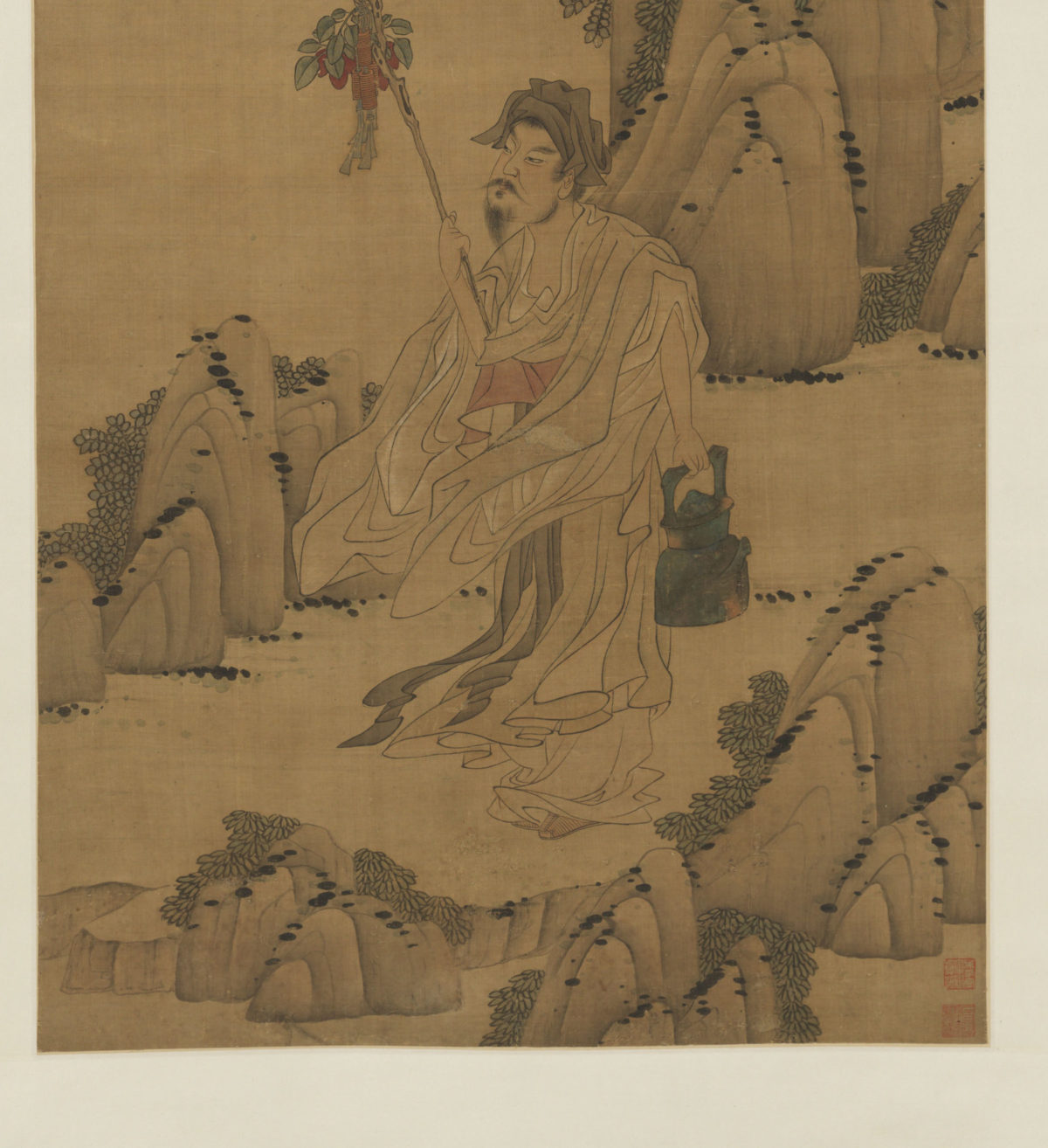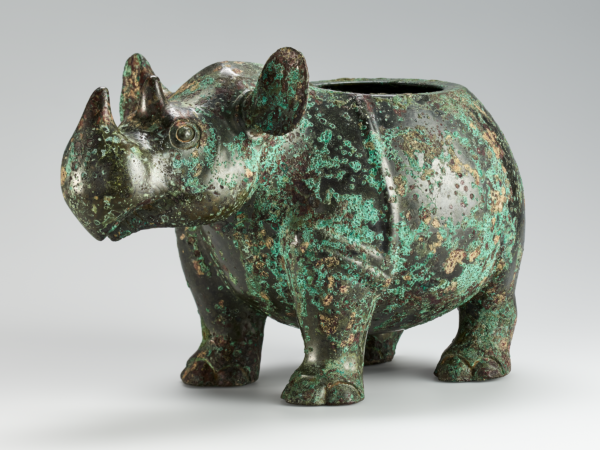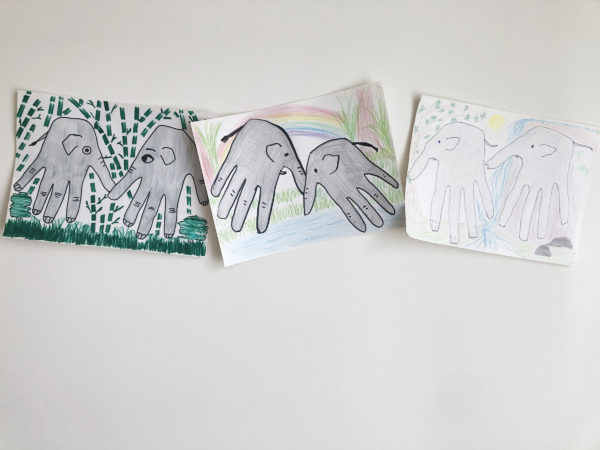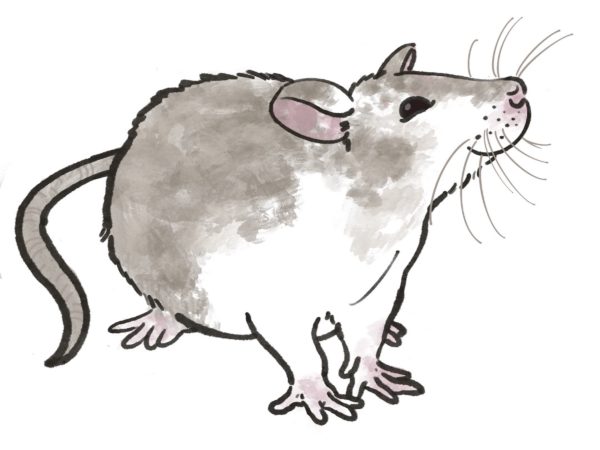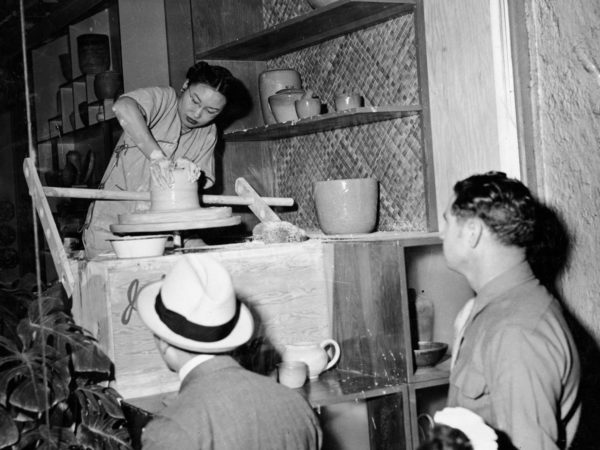The eagle often symbolizes the quality of heroism. In this painting the theme has been enhanced by the inclusion of two eagles— symbolically, “ double heroes”— and by the depiction of them fighting the chill of winter. Their fierce, glaring eyes and hunched, intent poses provide a riveting focal point for the painting. Lin Liang was an exception among court painters of his time. Instead of adhering to the colorful and technically precise style commonly used for flower-and-bird paintings, he experimented with black ink and freehand brushwork that resembled cursive script calligraphy. His paintings were so popular that a workshop was formed around him, so while this work may not have been painted by Lin Liang himself, it may instead be a piece from his workshop.
The genre of flower-and-bird painting reached its golden age during the Ming dynasty. Executed by a court artist, this colorful painting of geese and wagtails showcases a precision in rendering details, as if the artist had observed the scene in nature. This work exemplifies the court painting tradition associated with the former Southern Song dynasty (112–1279). Professional painters of and outside the Ming court did not always sign their works. Not only does this make it difficult to assign paintings to individual artists, but it has historically made it easy for unscrupulous collectors and dealers to add false signatures in the attempt to raise the economic value of paintings from this time. On the other hand, many Ming dynasty paintings, like this hanging scroll, have survived because of attributions to earlier periods.
In this fan painting the professional artist Zhou Chen depicts an official traveling in the mountains. The official is seen on the left mounted on a horse. He is greeted by a local peasant and followed by his servant, who carries on his shoulders a chest, an umbrella, and a roll of cloth. On the right side of the painting a person stands barefoot before a temple. His cape, which is made of grass, and the gourd-like vase he holds in his hand identify him as a Taoist. This suggests the underlying theme of this work might be an official seeking refuge in a Taoist temple. A native of Suzhou in Jiangsu province, Zhou Chen was known for his skill at figure-and-landscape painting. He based his style on those practiced at the court of the Song dynasty, especially Li Tang (active 1101– 1130) and Ma Yuan (1189– 1224). He was also influenced by Ming court painter Dai Jin (1388– 1462).
In this fan painting the professional artist Zhou Chen depicts an official traveling in the mountains. The official is seen on the left mounted on a horse. He is greeted by a local peasant and followed by his servant, who carries on his shoulders a chest, an umbrella, and a roll of cloth. On the right side of the painting a person stands barefoot before a temple. His cape, which is made of grass, and the gourd-like vase he holds in his hand identify him as a Taoist. This suggests the underlying theme of this work might be an official seeking refuge in a Taoist temple. A native of Suzhou in Jiangsu province, Zhou Chen was known for his skill at figure-and-landscape painting. He based his style on those practiced at the court of the Song dynasty, especially Li Tang (active 1101– 1130) and Ma Yuan (1189– 1224). He was also influenced by Ming court painter Dai Jin (1388– 1462).

